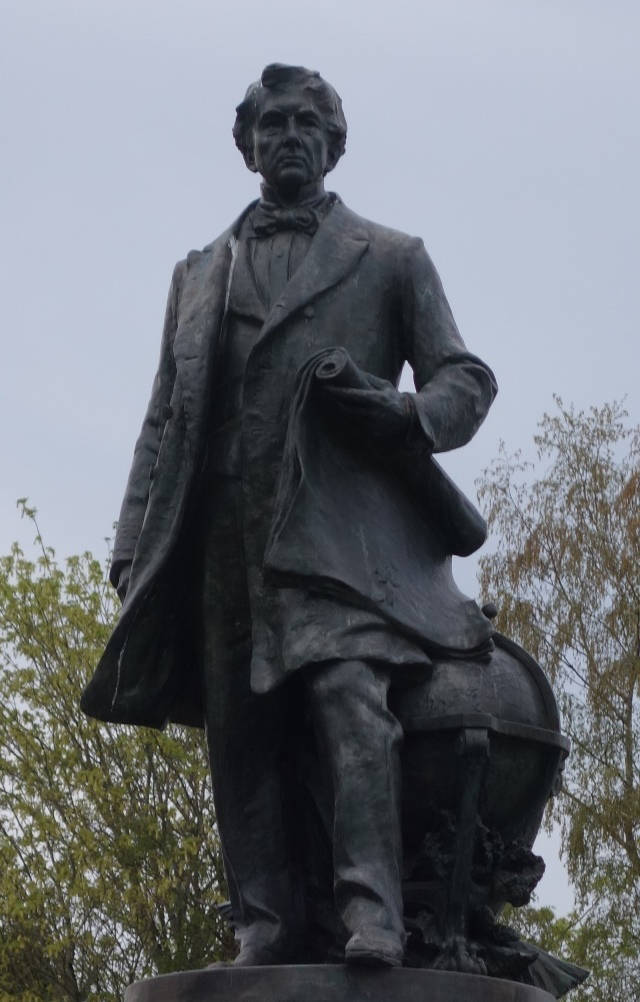William Henry Seward was a visionary and one of the most important diplomats in American history. As Seward’s Day (March 30) approaches, most Alaskans have certainly heard of this extraordinary man. Most of us in the state know he was “the man who bought Alaska.” Seward was, in fact, an extraordinary visionary who foresaw how the growth of the United States depended on immigrants, the end of slavery, the West and the Pacific Ocean.
Seward came of age as Americans began pushing west. He was nurtured on the spirit of “Manifest Destiny” and thoroughly convinced of the greatness of America and its people. His very first speech was an address in which he foresaw a nation ever expanding, blessed with natural resources and an enterprising people.
Into this dynamic world, Seward enthusiastically entered politics. A gifted speaker and natural politician, he was particularly adept at negotiating complex issues. Political contests were highly contentious and deeply partisan, and he became highly skilled. He served twice as governor of New York. As U.S. Senator for New York in the 1850s, he opposed the anti-immigrant party, the “Know-Nothings,” and was branded permanently as a radical anti-slavery advocate. He was a front-runner for the Republican presidential nomination in 1860, only to lose to Abraham Lincoln.
Seward then entered Lincoln’s cabinet as Secretary of State, where he honed his political skills to become a first-rate diplomat. He capably managed several serious diplomatic conflicts and nurtured friendly relations with the Empire of Russia. His greatest service was to keep Great Britain, France and Spain from recognizing the Confederate States of America. Had they done so and aided the Confederacy, it is doubtful that the United States could have maintained the Union.
These diplomatic efforts also heightened Seward’s visions of a “continental United States.” Militarily, the demands of the war revealed need for the U.S. to hold and develop both Caribbean and Pacific bases. His forward-looking foreign policy led Seward to explore purchasing naval bases in Cuba and the Danish West Indies (Virgin Islands). After the war, Seward even sought to buy Iceland and Greenland for their geopolitical value.
Seward’s interest in the North Pacific harked back to the conflicts the American whaling fleet experienced in Russian controlled waters off Alaska and Canada. He made a remarkable speech in 1860 proclaiming that one day Alaska would become part of the United States. Recognizing the great value the Russian Empire had for the U.S. war efforts, he welcomed visiting Russian battle fleets in both Atlantic and Pacific ports.
At the end of the Civil War, Seward was nearly assassinated in the same plot that killed Abraham Lincoln. Seward survived his wounds and stayed on as Secretary of State under the new president, Andrew Johnson. Seward pressed on, pursuing his earlier visions of expanded American presence in the West for both its commercial and its military importance. He sought possession of the Hawaiian Islands and won possession of Midway Island.
The greatest success of his Pacific dreams, however, was the region of Russian America. Talks with the Russian minister to the United States, Eduard de Stoeckl, had begun in the decade before the Civil War. During the war, Secretary of State Seward learned that the Russians were interested again in talks about a purchase. Seward laid his foundations well and used all his diplomatic skills. He kept the chairman of the Senate Foreign Relations Committee, Charles Sumner, in the loop. Sumner proved key in making the case for accepting a treaty when it was put forward for the needed 2/3 approval of the Senate.
Famously, Seward moved fast when the Russians agreed to make a deal, and in the early morning darkness on March 30, 1867, the treaty was concluded and was presented to the Senate the very next day. Senator Sumner rose and spoke approvingly for three hours, echoing the visions Seward had entertained for years: commercial promise and strategic value. The treaty passed 37-to-2, and the name of Alaska was affixed to the new territory. No one seriously considered it a folly.
William Seward continued to press his visions of an expanded and strengthened “continental America” in the remaining five years of his life. He believed not only in territorial expansion but in a commercial and diplomatic empire. He encouraged immigration to the United States, always seeing immigration as a source of strength. If he were alive today, he would not be surprised to learn that Alaska is a state comprising a vast area of natural wealth and beauty. Seward would not be surprised: he would be pleased.
Alaska was the centerpiece of this visionary’s achievement.
This is the eighth in a series about Kenai Peninsula history in observance of the 150th anniversary of the US purchase of Alaska,leading up to our local history conference, April 21-22 in Soldotna. For more conference information, check out its website athttp://www.kenaipeninsulahistory.org/ and its Facebook page, or phone 907-460-7554.

